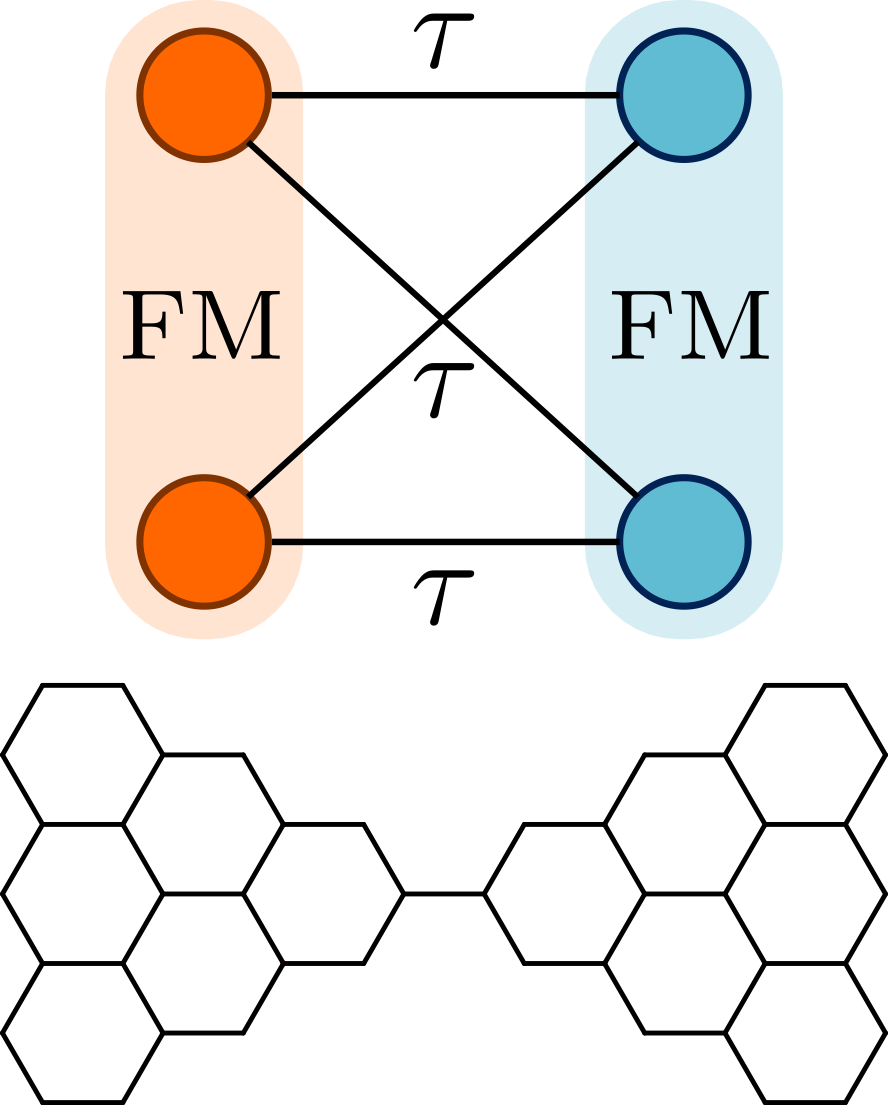Contributed talk
Anatomy of linear and non-linear intermolecular exchange in S = 1 nanographenes
João C. G. Henriques1,2 and J. Fernández-Rossier1
1 International Iberian Nanotechnology Laboratory (INL), Av. Mestre José Veiga, 4715-330 Braga, Portugal
2 Universidade de Santiago de Compostela, 15782 Santiago de Compostela, Spain
Nanographene triangulenes are molecules with an S = 1 ground state that have been used as building blocks of antiferromagnetic Haldane spin chains realizing a symmetry protected topological phase [1]. By means of inelastic electron spectroscopy, it was found that the effective intermolecular exchange contains both linear and non-linear Heisenberg interactions, realizing thereby the bilinear-biquadratic spin Hamiltonian [2].
The aim of this work is to shed some light on the origin of the two types of exchange and give analytical expressions for both in terms of the microscopic energy scales of the system. To do so, perturbation theory, up to fourth order, is used, starting from a fermionic Hubbard model, which is then mapped to an interacting Creutz ladder model. The analytical expressions compare well with experimental results, and numerical diagonalization.
The extension to general S = 1 molecules is also discussed, and numerical results for the strength of the non-linear exchange for several nanographenes are given. These results pave the way towards rational design of spin Hamiltonians for nanographene based spin chains.
 Figure 1: Schematic representation of the interactions in a triangulene dimer that originate the linear and non-linear exchange.
Figure 1: Schematic representation of the interactions in a triangulene dimer that originate the linear and non-linear exchange.
[1] Mishra, S., Catarina, G., Wu, F. et al. Observation of fractional edge excitations in nanographene spin chains. Nature 598, 287–292 (2021)
[2] G. Catarina and J. Fernández-Rossier, Phys. Rev. B 105, L081116 (2022)